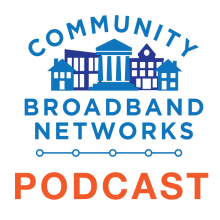Near the Heart of Silicon Valley, a Community Failed by the Big ISPs Is Building Its Own Network
Scott Vanderlip can see Google’s headquarters from his house in the town of Los Altos Hills, California (pop. 9,000). But still, some of his neighbors struggle to access the online world that the tech company has helped shape.
“There are people in my town who actually have really no Internet options,” Vanderlip shared in a Zoom interview. This includes some households stuck with satellite connections that have low speeds, high latency, and restrictive data caps. “We are in Silicon Valley, and we have really bad pockets of [limited] broadband,” he continued.
Even the residents who could connect to AT&T or Comcast’s networks, such as Vanderlip, were dissatisfied with the monopoly companies’ poor service quality. So they created Los Altos Hills Community Fiber, a nonprofit mutual benefit corporation that’s bringing a local, high-quality connectivity option to the area.
Los Altos Hills Community Fiber, or LAHCF, owns and finances the local Fiber-to-the-Home network and recruits interested community members, while its technical partner Next Level Networks manages network operations and construction and provides residents with tools to help organize their neighbors. The arrangement gives LAHCF subscribers more say over how the network operates and what speeds they have access to, a stark difference from the antagonistic relationship that many national Internet service providers (ISPs) have with their customers.
“Anyone can do this,” said Next Level Networks COO David Barron in a phone interview. “You just need a few motivated people to organize, and you can be completely free of the telcos and cable operators.”
Money Can’t Buy Cable Upgrades
Comcast and AT&T are the major broadband providers in Los Altos Hills, but the lack of competition means there’s little incentive for providers to improve service quality, despite interest from subscribers. “Los Altos Hills sometimes is listed as the most affluent community in America, and we still have crap Internet service,” as a result of the ISPs’ reluctance to invest in network upgrades, explained Vanderlip.





